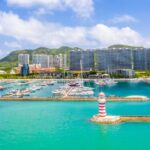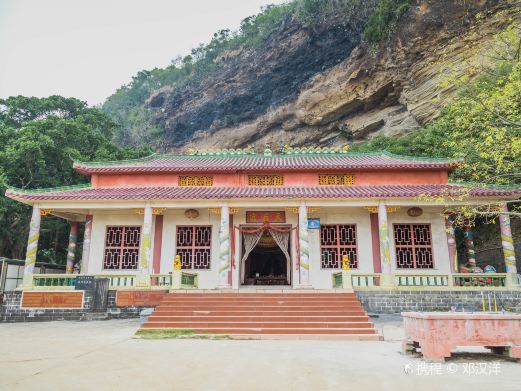Boao Oriental Culture Park is located by the Wanquan River. It is a cultural symbol of Boao and also a better scenic area for understanding Hainan’s human geography. The culture park consists of two parts: Boao Buddhist Temple and Oriental Culture Theme Park. Boao Buddhist Temple is constructed in accordance with the orthodox Zen temple regulations. With north-south as the central axis, there are sequentially Tonghui Gate, Puji Hall, Mahavira Hall, and Wanfo Pagoda. On both sides of the east and west are bell and drum towers, east and west side halls, abbot’s building, upper guest hall, and monk dormitories. Among them, Puji Hall enshrines twelve distinctive ‘Guanyin statues’. The ‘Wanfo Pagoda’ is 77 meters above sea level and 55 meters high. It is the tallest building in the Boao area. Inside the tower is enshrined a 16.8-meter-high bronze thousand-handed and thousand-eyed Guanyin Bodhisattva statue, which is rare in Asia. In the backyard of Boao Buddhist Temple are attached the Oriental Culture Theme Park and Lotus Pavilion. The Oriental Culture Theme Park is a large comprehensive tourist scenic area that highlights Buddhist culture as the core connotation. The Lotus Pavilion is a lotus-themed technology and culture hall constructed according to museum specifications. It comprehensively displays the historical, cultural, technological, and economic values of lotus through digital means.
Opening hours: Open all year round from 8:00 to 18:00. Must-see tips: 1. On the water tour line of Boao Oriental Culture Park, there is a small island with an area of only 6 square meters called ‘Lotus Pier’. It was listed as one of the ‘Eight Scenic Spots of Lehui’ in the county annals of Lehui in the Qing Dynasty. According to local folklore, this island is the lost lotus throne of Guanyin. The Qionghai County Annals records that there was an original stone tablet of the Ming Dynasty on the island, engraved with ‘Lotus Meditation’. Local people come here to burn incense and pray for safety before sailing far away. 2. ‘Ohga Lotus’: In 1951, in Chiba Prefecture, Japan, an ancient sunken ship that came to China more than 2,000 years ago and three ancient lotus seeds were discovered. Botanist Dr. Ohga Ichiro cultivated the lotus seeds into new lotuses and named them ‘Ohga Lotus’. In 2003, Japanese friend Toshihiro Nikai sent the Ohga Lotus back to China and took root in Boao.Boao Oriental Culture Park
Boao Oriental Culture Park is located by the Wanquan River. It is a cultural symbol of Boao and also[...]









